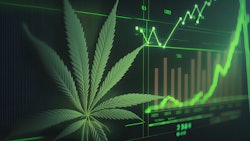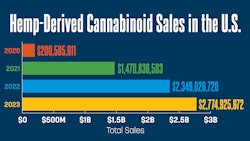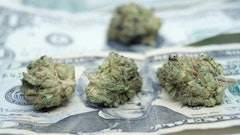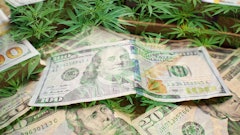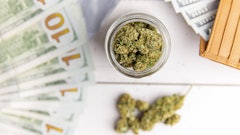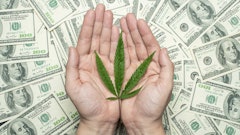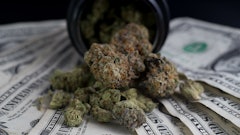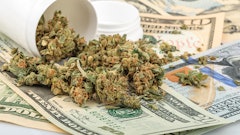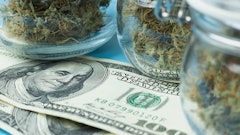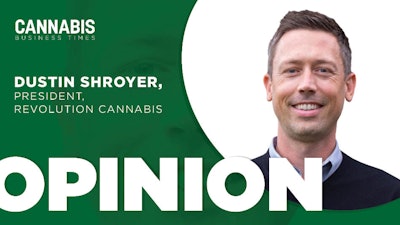
In the rapidly evolving cannabis industry, distinguishing between hemp and cannabis has become more challenging, leaving consumers to discern among multiple products sold in both regulated and unregulated markets, creating unprecedented confusion. One primary example of this confusion is what is known as THCA hemp. This product exists in a gray area between legal hemp and regulated cannabis due to its conversion when heated into THC, the main psychoactive compound in cannabis. This situation raises critical questions about consumer safety, market fairness, and the trajectory toward broader cannabis acceptance and federal legalization.
The Critical Questions
As our industry continues to mature, we must ask ourselves: Is THCA hemp merely a temporary regulatory loophole, or does it represent a more straightforward path to federal legalization and broader cannabis acceptance? This gray area demands more explicit guidelines and greater transparency to alleviate consumer confusion and ensure that products meet rigorous legal standards. The ongoing dialogue around THCA hemp's role in cannabis policy and consumer education underscores the importance of regulatory evolution and informed discussion.
Simplifying the Science
THCA, or tetrahydrocannabinolic acid, is the non-psychoactive precursor found in unprocessed cannabis plants. When heated—through smoking, vaping, or cooking—THCA converts into THC, unlocking the plant's psychoactive potential. This conversion is crucial for understanding cannabis potency and navigating the legal landscape. However, the calculation can be complex:
Total THC = (THCa×0.877) + THC
This formula accounts for the conversion efficiency, providing a closer estimate of a product's psychoactive potential and potency. Yet, for many consumers, the intricacies of this process remain opaque, underscoring the need for straightforward information. THCA is the psychoactive component in smokable cannabis flower, regardless of how it is classified, including marijuana and hemp. The only difference is the name it is referred to in states where “marijuana” remains illegal.
The Need for Transparency and Consumer Safety
The 2018 Farm Bill distinguished hemp from marijuana by setting a delta-9 THC threshold at 0.3%. Because of this legal definition, many assume hemp and cannabis are different plants and that hemp does not produce psychoactive cannabinoids, which we know is not the case. This focus also overlooks THCA's impact, complicating regulatory compliance and consumer education. Accurate labeling and informed consumption are essential as the market evolves, empowering consumers to make educated decisions.
Patients and consumers have contacted me directly sharing their frustrations, thinking they are purchasing low-THC hemp products, but then experience much stronger effects than anticipated or preferred, underscoring the importance of transparent labeling and education.
But how did we get here in the first place?
The definition of hemp products has evolved over the past five-plus years since the 2018 Farm Bill. This has been a bit of a convergent evolution, a “process in which organisms that are not closely related independently evolve similar features.” But it’s not the plant evolving. Like biological evolution, the industry has been “adapting” to legal interpretations as it grows. And this rapid evolution is leaving everyone perplexed. How can one plant become two and then turn back into one?
Historically, hemp has been a low-potency crop, grown for fiber to produce textiles and seed for its healthy oils high in omega-3 fatty acids. These plants needed to be easy to process, so the sticky flower resin was minimized through centuries of crop selection to reduce the sticky oil content produced by the flowers as much as possible. This cultivation strategy changed with the popularization of CBD in mid-2010. Hemp plants, low in THC, could be bred to produce high amounts of cannabinoids such as CBD.
The 2018 Farm Bill divided Cannabis sativa L into two categories: hemp and marijuana, which defined hemp as any cannabis plant that is below 0.3% THC, and marijuana as any plant that tests above 0.3% THC. The intention was to ensure intoxicating plants were cultivated as marijuana and regulated as such. This language would allow farmers to grow crops for fiber and seed and non-intoxicating cannabinoids such as CBD, CBDA, CBG, CBGA, etc. This definition also meant that hemp would not be considered a scheduled, controlled, and federally illegal substance like cannabis.
However, lawmakers failed to recognize one critical point: THCA, a non-intoxicating cannabinoid, is the prominent intoxicating cannabinoid in cannabis plants. Cannabis plants don’t produce high amounts of delta-9 THC. Delta-9 THC comes from the decarboxylation of THCA when you consume cannabis flower in traditional ways, such as smoking it, vaping it, or heating and ingesting it orally.
The U.S. Department of Agriculture (USDA) clarified this by solidifying rules for producing legal hemp. According to the USDA, which regulates hemp cultivation, hemp plants must pass two burdens of proof to be considered hemp.
- It was grown by a licensed hemp grower in compliance with state hemp rules that the USDA approved.
- It meets pre-harvest standards for the total THC outlined by the USDA.
Furthermore, to be shipped over state lines, hemp products must remain under 0.3% THC.
So then, how is marijuana being sold nationwide, across state lines, and outside the regulated market under the name of THCA hemp?
The Ripple Effect of DEA Announcements and State Loopholes
In an intriguing turn of events, the Farm Bill's declaration that the magic number distinguishing hemp from marijuana is a mere 0.3% THC content has paved a somewhat tumultuous path. This seemingly straightforward threshold has unwittingly given rise to a complex web of supply and demand dynamics, further complicated by the patchwork of state regulations and the ingenuity of the cannabis market.
The problem begins with the glut of cannabis within certain state borders, creating a surplus that the regulated market can no longer absorb. This abundance has nudged prices downward, prompting many to find relief beyond licensed state markets. Herein lies the twist: States with restrictive cannabis laws inadvertently fan the flames of demand, with the allure of direct shipping offering a tantalizing workaround.
Yet, this is where the waters are muddy. Specific loopholes within state hemp programs have quietly allowed the production of what, by USDA standards, could be classified as marijuana masquerading as hemp. The crux of the issue lies in the pre-harvest testing for total THC. In states where regulations gloss over the definition of total THC, a narrow focus on delta-9 THC can mistakenly greenlight the cultivation of plants that the USDA would deem too high in psychoactive potential to be considered hemp.
Navigating the Minefield: Risks and Ramifications
Suppliers treading this fine line are playing with fire, as the federal hammer could come down hard on those caught distributing "hot" products across state lines. Indeed, all high THCA cannabis flowers will ultimately surpass the 0.3% delta 9 threshold due to the conversion of THCA to THC that occurs.
For consumers, the legal landscape is equally fraught. Purchasing products with a THC content exceeding the 0.3% delta-9 threshold could lead to encounters with law enforcement, classifying their purchase as illegal marijuana. Moreover, the absence of mandated safety testing in the hemp market poses significant health risks, leaving consumers vulnerable to contaminants and unaware they're dabbling with potent products.
This scenario, while offering a lifeline of cannabis access to those in prohibition states, is riddled with pitfalls. The complexity, legal jeopardy, and health hazards underscore the pressing need for a more straightforward, safer pathway to cannabis accessibility.
A Unified Path Forward: Federal Clarity Meets Regulatory Harmony
The ideal trajectory toward resolving these challenges calls for a harmonized approach to hemp and cannabis regulation. By embracing the intrinsic similarities between these two branches of the cannabis family tree, we can streamline the legal framework, benefiting all stakeholders involved. Adopting uniform testing and labeling standards—akin to those outlined by the USDA—or establishing a cohesive regulatory framework promises to bolster product safety, legality, and consumer confidence.
Such integration addresses the pressing issue of supply and demand imbalance and opens the gates to new markets brimming with high-quality, compliant products. For consumers, this means access to a broader array of safe cannabis options, free from the shadows of legal uncertainty and the risks of untested products.
A Future of Clarity and Compliance
In the quest to demystify the cannabis market, federal legalization emerges as the beacon of hope. With it, the establishment of minimum standards for state marijuana and hemp programs could pave the way for a more transparent, regulated, and consumer-friendly cannabis landscape. As we navigate this intricate journey, the goal remains clear: to forge a path that ensures safety, legality, and accessibility for all, leaving confusion and risk in the rearview.
Dustin Shroyer is president and COO of Revolution Cannabis.










